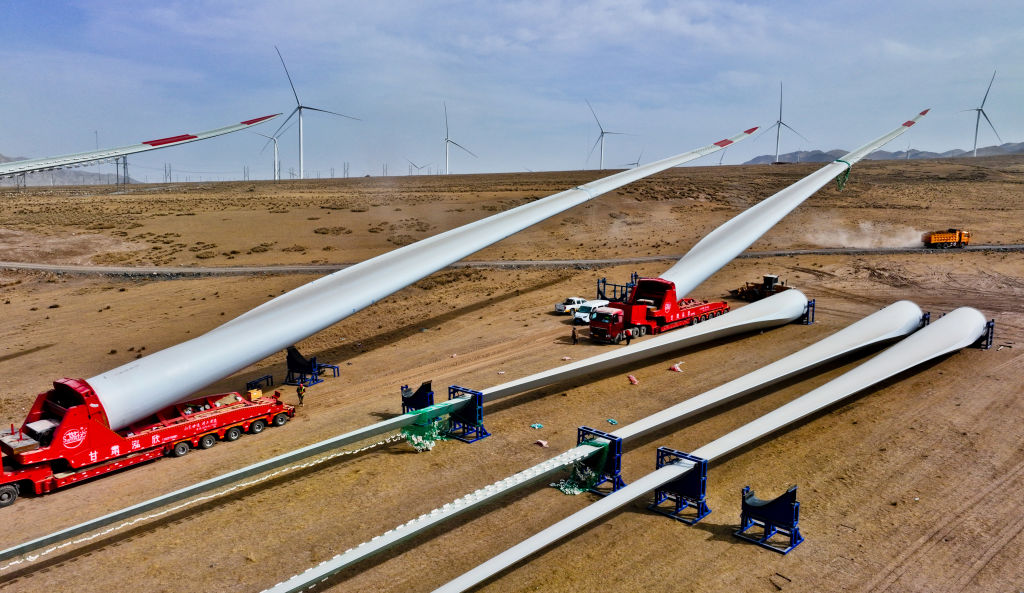
(To get this story in your inbox, subscribe to the TIME CO2 Leadership Report newsletter here.)
Building the right workforce. Accessing federal tax incentives. Convincing communities of the value of a renewable energy project. These were among the hot topics of conversation for the mix of founders, corporate executives, financiers, and government officials who gathered in Washington, D.C., this week to talk about how to build more clean energy projects—and build them faster.
The discussions at the aptly named Deploy23 conference—hosted by the U.S. Department of Energy (DOE)—offered a good glimpse into the heart of the energy and climate challenge today. We’ve come a long way in understanding the science and technology needed to decarbonize. And, while there’s always room for more innovation, today much of the success of the climate fight hinges on building projects using existing technology. To do that requires getting the business models right and winning over support from the right stakeholders.
Many in the climate space—think Bill Gates—still like to focus public attention on future clean technology innovations, like nuclear fusion. Yet, getting through the complex challenge of expanding existing technologies may be the most urgent task needed to get the world on track to meet our climate targets—or, at the least, avoid blowing past them too quickly. In the climate world, achieving this is often boiled down to one word: deployment.
There’s perhaps no better way to illustrate the urgency of deployment than analysis released by the International Energy Agency (IEA) on Tuesday. The report, an update to a landmark 2021 report charting a global path towards net-zero emissions by 2050, found that we can still achieve that goal in large part because the world has been so successful at deploying renewable energy over the last few years. But the pace needs to pick up even more. Going forward, the report suggests, the most impactful thing companies can do is triple renewable energy capacity by the end of the decade.
The report also offers an implicit rejoinder to the prominent voices who insist that technology is not mature enough to meet the scale of the challenge. Technology on the market today is sufficient to reach 66% of the global emissions reduction needed, according to the IEA. That’s a remarkable leap from two years ago when that number was just 50%.
But the IEA identifies several barriers to actually deploying these technologies: permitting challenges and concentrated supply chains, to name a few. Indeed, in my own conversations in the U.S. and especially elsewhere around the world, I’ve often found clean-technology executives are more concerned with navigating the thickets of regulation and community relations than with accessing capital or actually improving their tech. To get past these challenges, the IEA report calls for policymakers to work together with civil society and companies to accelerate important projects.
Those were the kinds of conversations taking place at Deploy23 as DOE officials walked companies through how to apply for federal funding, while executives shared best practices on community engagement, and union leaders talked about how to build a quality workforce. “The goal is accelerated commercial-scale deployment of critical clean technologies,” Jigar Shah, conference host and director of the DOE’s Loan Programs Office, told attendees at the outset. “And the way that this happens in America is industry and investors make stunning leaps and bets on the future.”
More Must-Reads From TIME
- The 100 Most Influential People of 2024
- How Far Trump Would Go
- Scenes From Pro-Palestinian Encampments Across U.S. Universities
- Saving Seconds Is Better Than Hours
- Why Your Breakfast Should Start with a Vegetable
- 6 Compliments That Land Every Time
- Welcome to the Golden Age of Ryan Gosling
- Want Weekly Recs on What to Watch, Read, and More? Sign Up for Worth Your Time
Write to Justin Worland at justin.worland@time.com